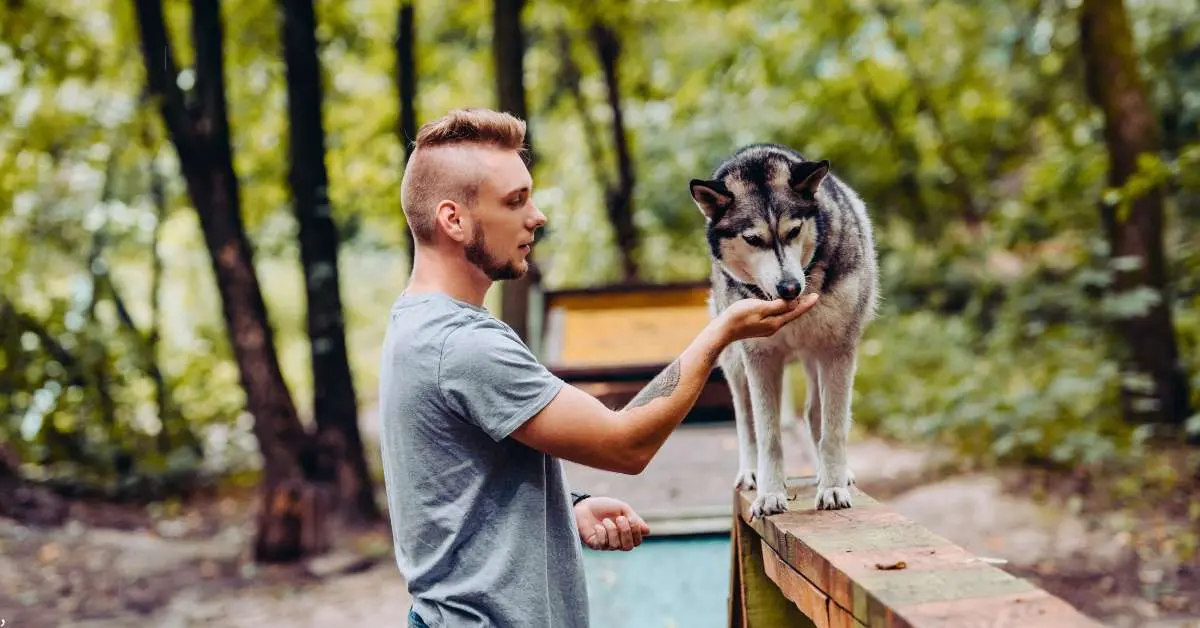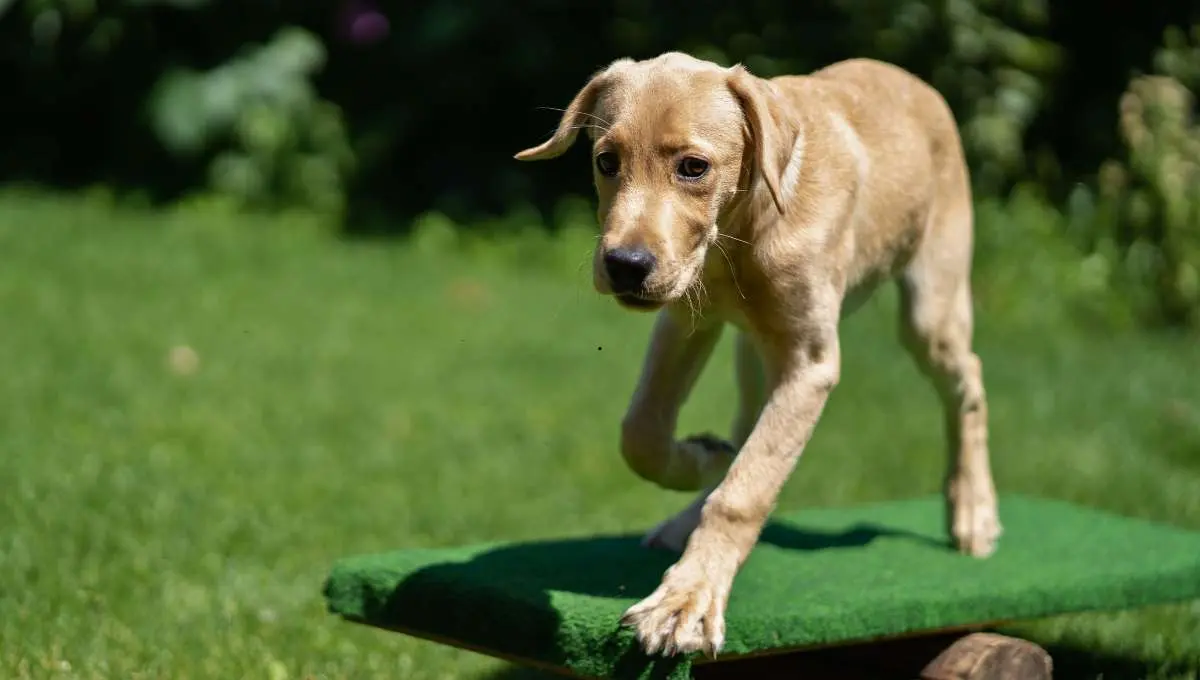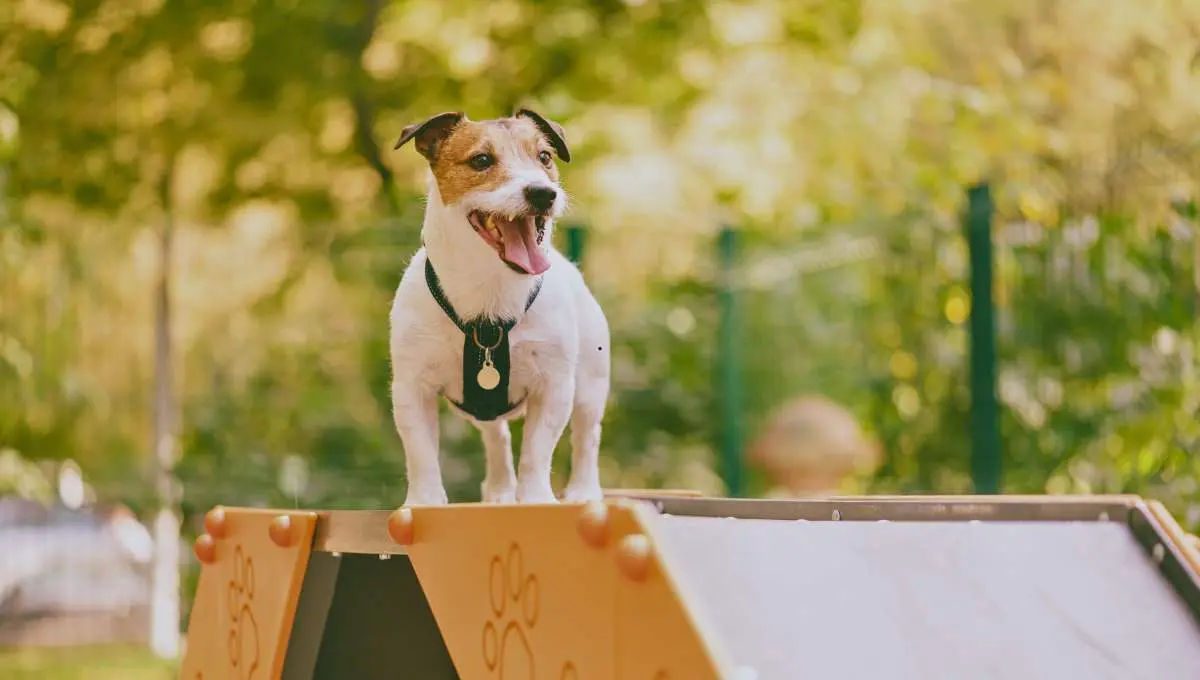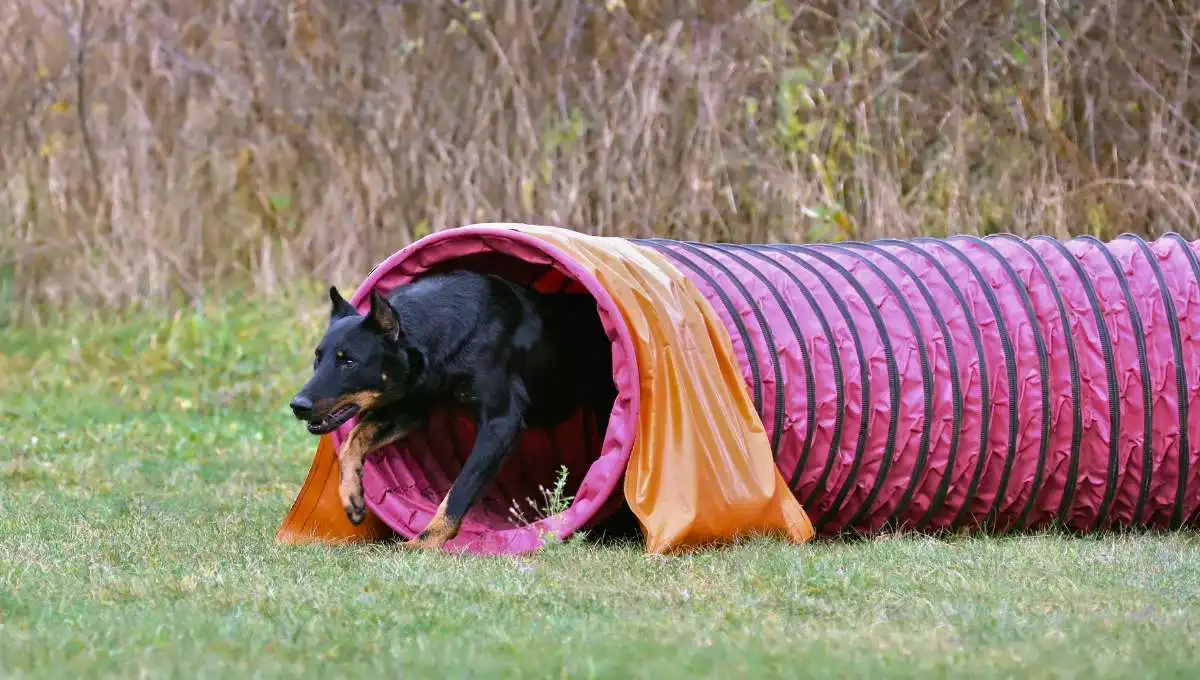Train your dog to agility prowess right in the comfort of your own home with these crucial tips and techniques. From building your dog’s confidence to increasing their focus and attention, this guide covers everything you need to know to kickstart your dog’s agility training journey.
With expert advice from AKC Executive Agility Field Representative, Arlene Spooner, learn how to introduce your pup to agility obstacles, enhance their coordination and flexibility, and master important handling skills. Discover how to tackle common fears such as moving objects and dark spaces, and build a strong foundation for advanced agility training. Whether you’re a beginner or looking to enhance your dog’s skills, this comprehensive guide has got you covered.
The Types of Agility Exercises for Home Training
|

Jumps and Hurdles
Jumps and hurdles are imperative agility obstacles to practice at home. Use low poles balanced between objects and ensure they fall if bumped. The height should be comfortable for your dog, gradually increasing as they progress. It’s crucial to prioritize your dog’s safety and well-being by starting with lower heights and avoiding slippery surfaces. Recognizing your dog’s capabilities and building their confidence is key in this exercise.
Tunnels and Chutes
One of the most exciting agility exercises to train at home are tunnels and chutes. Start with a makeshift tunnel using blankets and chairs to get your dog accustomed to the dark, enclosed space. This exercise helps your dog overcome any fear of confined spaces and introduces them to agility equipment in a safe and controlled environment. This foundational training will set the stage for more advanced agility work in the future.
Step-by-Step Guide for Getting Started
| 1. Setting Up Your Training Space | 2. Basic Agility Commands and Cues |
Setting Up Your Training Space
Started: Assuming you’re ready to start training your dog at home for agility, setting up the right training space is crucial. Find a place in your home or yard that is spacious and free of obstacles. Ensure the area is safe for your dog to move around freely and comfortably.
Basic Agility Commands and Cues
You’ve decided to launch agility training with your furry friend, and the first step is mastering basic agility commands and cues. These commands, such as ‘Watch Me’ or ‘Come’, are crucial for guiding your dog through obstacles with ease and precision. Plus, consistency is key when implementing these commands to ensure your dog understands and responds effectively.

Tips for Effective Agility Training at Home
Positive Reinforcement Techniques
There’s nothing more effective in training your dog for agility than using positive reinforcement. Rewarding your dog with treats, praise, or play when they perform desired behaviors will enhance their learning and enjoyment of the training process. Remember to be consistent with your rewards and praise to reinforce good behavior.
Maintaining Your Dog’s Interest and Motivation
The key to successful agility training at home is maintaining your dog’s interest and motivation. Keep training sessions short and engaging to prevent boredom or frustration. Incorporate games, toys, and variety into your training routine to keep your dog enthusiastic and focused on the task at hand. Any dog that is motivated and excited to train will learn more quickly and enjoy the process.
Understanding your dog’s needs and preferences is crucial in keeping them engaged and motivated during training sessions. Incorporating positive reinforcement techniques and providing a variety of stimulating activities will ensure that your dog enjoys the training process and continues to improve their agility skills. Remember to be patient, and consistent, and always prioritize your dog’s well-being and happiness throughout the training process.
Factors to Consider When Training Agility at Home
Your Dog’s Age and Physical Health
For dogs, it’s crucial to consider their age and physical health when training them for agility at home. Young puppies may not be ready for strenuous activities, while older dogs may have limitations due to arthritis or other health concerns. It’s important to tailor the training exercises to suit your dog’s individual needs and capabilities. Any signs of discomfort or pain should be addressed immediately, and exercises should be adjusted accordingly.
The Importance of Consistent Practice
For dogs, consistent practice is key to success in agility training. Regular training sessions help reinforce skills, build muscle memory, and improve overall performance. To maximize results, training should be done on a regular basis, ideally several times a week. Consistency in training helps your dog stay engaged, motivated, and prepared for agility trials or competitions.

Pros and Cons of Home Agility Training
| Advantages | Limitations and Challenges |
| Flexibility in training schedule | Lack of professional guidance |
| Cost-effective compared to classes | Potential for incorrect technique |
| Personalized training environment | Difficulty in mastering complex skills |
| Building a strong bond with your dog | Limited access to specialized equipment |
| Developing dog’s confidence and trust | Possible risk of injury without proper supervision |
Advantages of a Personalized Training Environment
Some of the advantages of training your dog agility at home include the ability to create a personalized training environment tailored to your dog’s specific needs, which can help in building a stronger bond between you and your pet. Additionally, the flexibility in scheduling training sessions allows for consistent practice and reinforcement of skills.
Limitations and Challenges of Training Without Professional Help
If you choose to train your dog agility at home without professional help, you may encounter limitations and challenges such as the lack of expert guidance, which can lead to potential errors in training techniques. Additionally, mastering complex skills without proper instruction and access to specialized equipment can be challenging.
Training your dog agility at home can be a rewarding experience, but it’s crucial to be aware of the limitations and challenges that come with it. Without the guidance of a professional trainer, there is a risk of your dog developing incorrect agility techniques, which can lead to performance issues or even injuries. It’s important to continuously assess your dog’s progress, seek out resources for proper training methods, and prioritize safety throughout the training process.

Final Words
With these considerations in mind, training your dog for agility at home can be a rewarding and enjoyable experience for both you and your furry companion. By starting small, prioritizing success, and incorporating a variety of training techniques, you can build a strong foundation for future agility training.
Remember to always prioritize your dog’s safety and well-being, and seek expert guidance as needed, especially for more advanced skills like the weave poles. With patience, dedication, and a lot of fun, you and your dog can begin on a journey toward agility success right in the comfort of your own home.
Frequently Asked Questions (FAQs)
What is the best way to start training my dog agility at home?
The best way to start training your dog agility at home is by ensuring success by starting small and gradually raising expectations. Keep training sessions short, no more than 5-10 minutes at a time, and use plenty of encouragement and praise when your dog is successful. It’s important to keep it fun and stop before your dog loses interest.
How can I increase my dog’s attention for agility training?
To increase your dog’s attention for agility training, you can teach them to make eye contact with you on a cue like Watch Me or Look. Start in a quiet location where you are the most interesting thing around, then gradually build up to more distracting locations. fostering greater attention is crucial for successful agility training as it is a team sport that requires guidance from the handler.
What are some important tricks to teach my dog for agility training?
Some important tricks to teach your dog for agility training include nose targeting, walking backward, and jumping through a hoop. These tricks can improve training techniques, increase your dog’s coordination and confidence, and help them navigate agility obstacles more effectively. Tricks that increase flexibility, body awareness, and confidence with moving objects are also beneficial for agility training.
